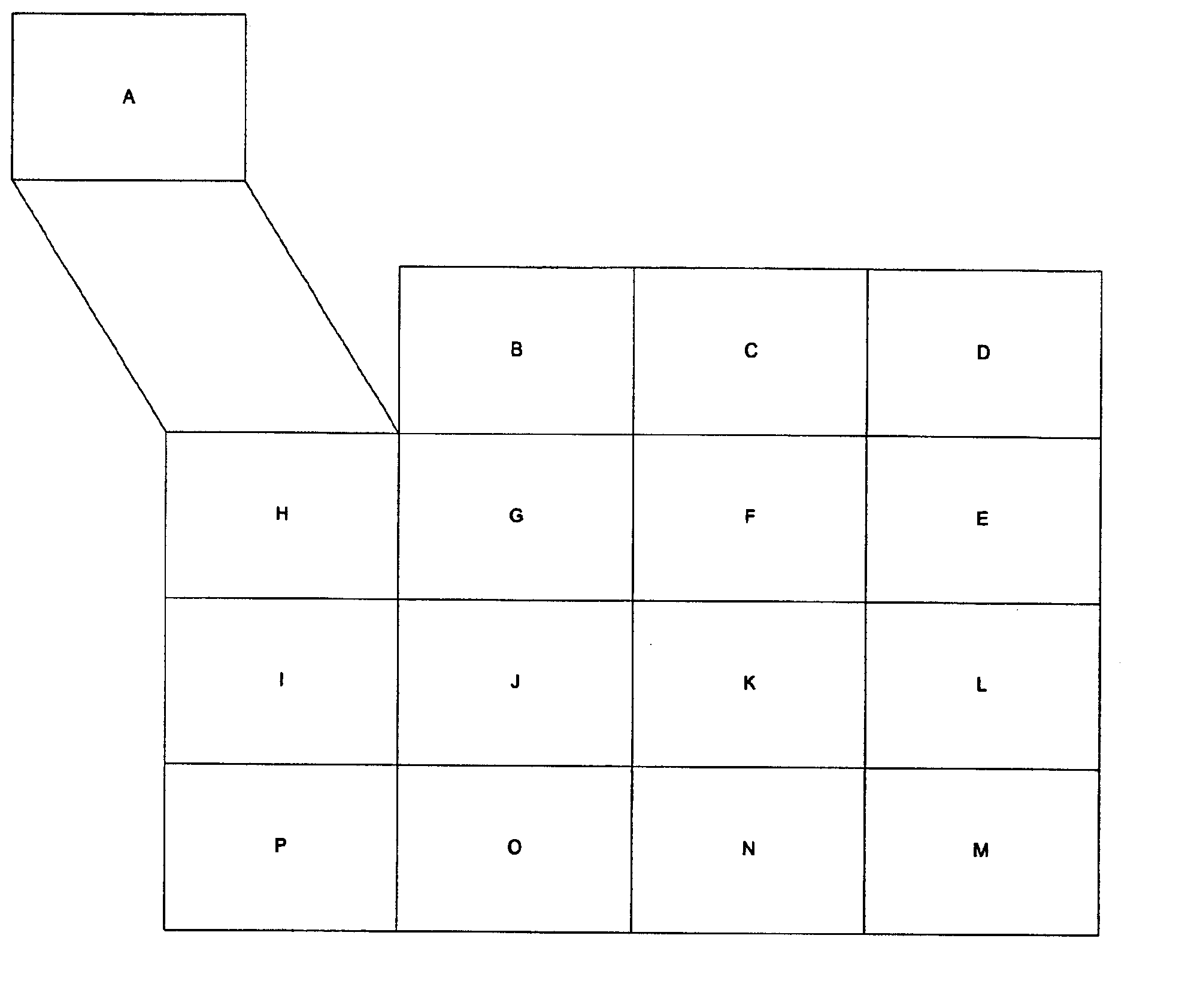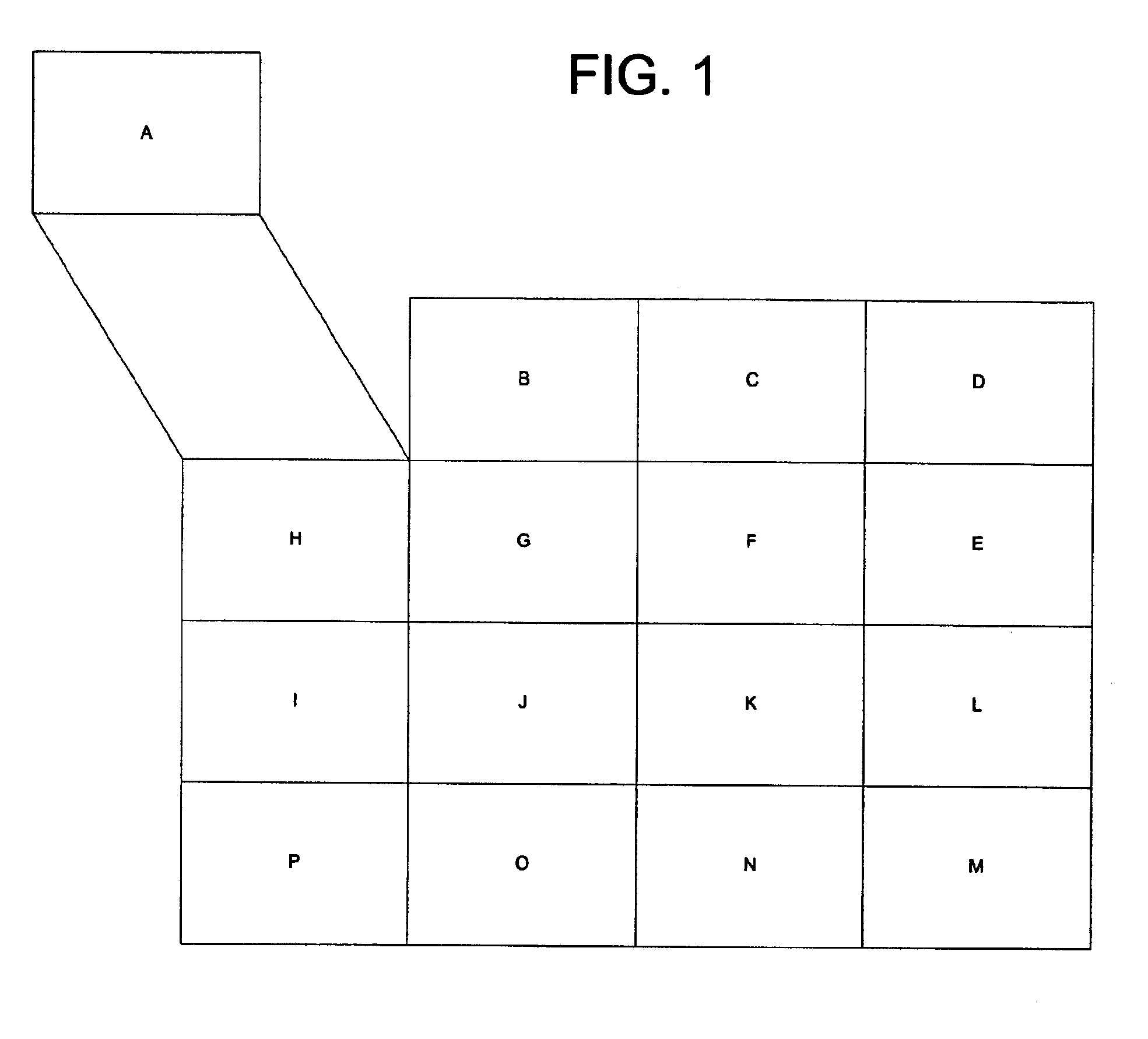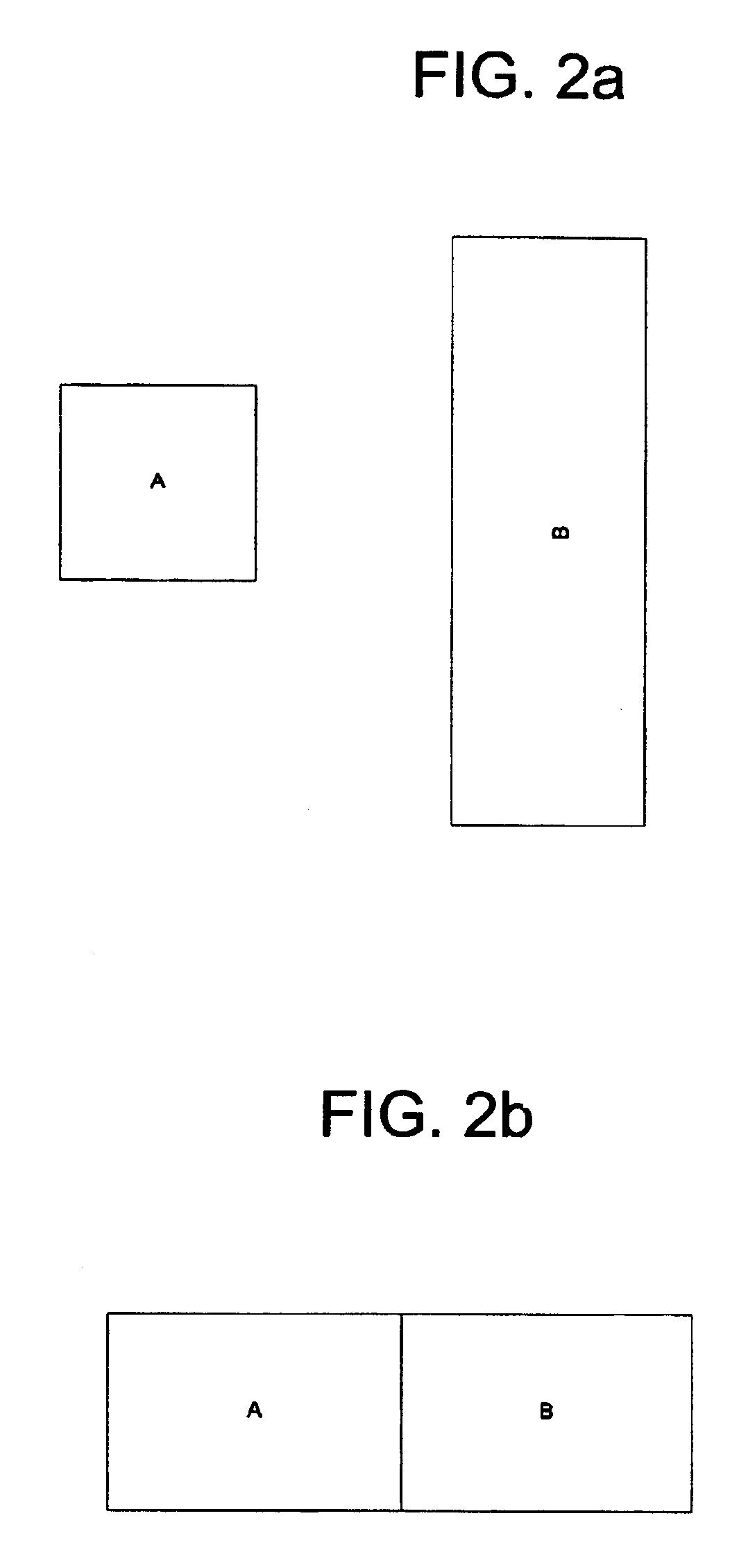Using embedded steganographic identifiers in segmented areas of geographic images and characteristics corresponding to imagery data derived from aerial platforms
a technology of geographic images and steganographic identifiers, applied in the field of image management and processing, can solve the problems of managing and coordination of the resulting large data sets, and the problem of efficiently updating “stale” imagery
- Summary
- Abstract
- Description
- Claims
- Application Information
AI Technical Summary
Benefits of technology
Problems solved by technology
Method used
Image
Examples
Embodiment Construction
[0017]For expository convenience, the following section focuses on satellite and aerial “imagery” to illustrate the principles of the invention. The principles of the invention, however, are equally applicable to other forms of aerial surveillance data and other topographic / mapping information. Accordingly, the term “image” should be used to encompass all such other data sets, and the term “pixel” should be construed to encompass component data from such other data sets.
[0018]When new aerial imagery is received, it is generally necessary to identify the precise piece of earth to which it corresponds. This operation, termed “georeferencing” or “geocoding,” can be a convoluted art and science.
[0019]In many systems, the georeferencing begins with a master reference system (e.g., latitude and longitude) that takes into account the earth's known deformities from a sphere. Onto this reference system the position of the depicted region is inferred, e.g., by consideration of the satellite's...
PUM
 Login to View More
Login to View More Abstract
Description
Claims
Application Information
 Login to View More
Login to View More - R&D
- Intellectual Property
- Life Sciences
- Materials
- Tech Scout
- Unparalleled Data Quality
- Higher Quality Content
- 60% Fewer Hallucinations
Browse by: Latest US Patents, China's latest patents, Technical Efficacy Thesaurus, Application Domain, Technology Topic, Popular Technical Reports.
© 2025 PatSnap. All rights reserved.Legal|Privacy policy|Modern Slavery Act Transparency Statement|Sitemap|About US| Contact US: help@patsnap.com



